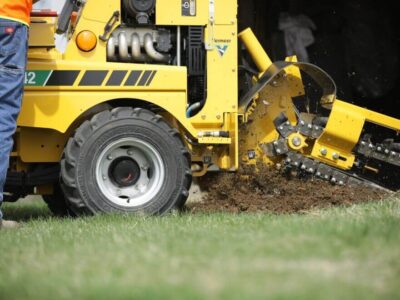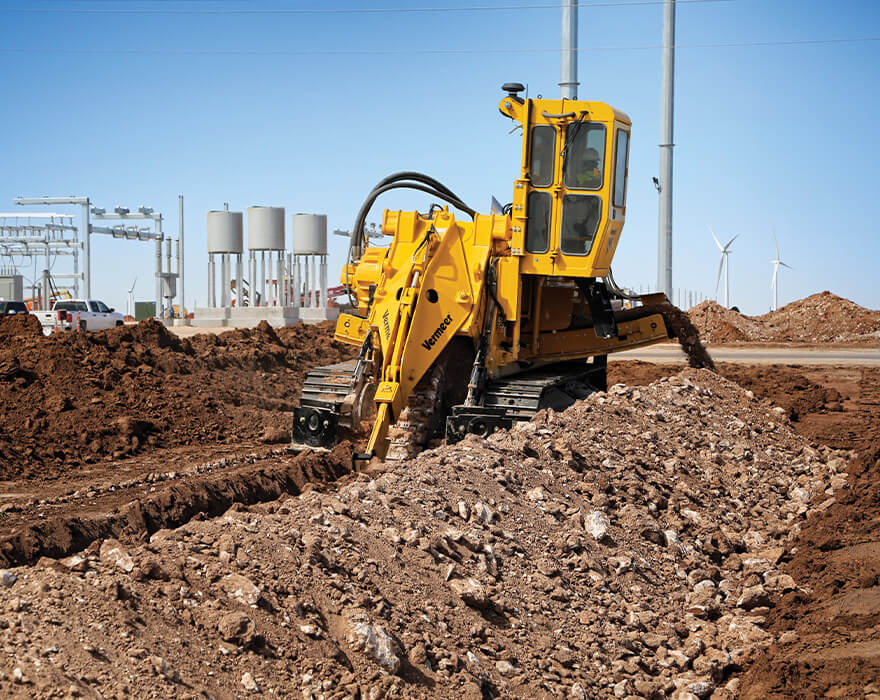With our world becoming more connected through electricity, more electric vehicles on the road and continued investments in renewable energy sources, the electrical grid is hardening and expanding. Underground utility installation equipment, including Vermeer trenchers, play a key role in the changing electrical market.
“As utility companies work to build a more resilient electrical grid, there are several exciting opportunities opening up for contractors doing electrical installation work,” said Ed Savage, Vermeer product manager.
One opportunity is in hardening the grid. Natural disasters, like hurricanes, ice storms, tornadoes and more, are driving factors in moving power lines underground to minimize the chance for widespread outages.
“Trenchers will have a significant role in making that happen,” said Savage. “Especially in rural areas where there are less existing underground utilities or a larger right of way to work in, there are limited above-ground obstacles like you would encounter in an urban area, or when a large-diameter trench is needed for more complicated installs.”
With the growth of the renewable energy market, there are a lot of work opportunities for electrical contractors. Wind and solar farm operations must be connected to the electrical grid to transport the captured energy.
As more electric vehicles take to the road, more recharging stations will be needed. “Fast charging stations and the ability to charge several vehicles at one site often require larger electrical lines than what’s currently running to these sites,” said Savage. “So, this is another area where there is potential growth in the coming years.”
Determining the right equipment
Determining the right trencher for your jobsite can be difficult, especially when exploring a new market.
“Everything from small pedestrian trenchers to large trenchers with a track undercarriage are used to perform electrical work,” said Savage.
With the wide range of Vermeer trencher options, you can make an informed decision about the best one for your jobsite.
Equipment ranges from 13-hp (10-kW) pedestrian trenchers up to 600-hp (447-kW) pipeline trenchers that can cut a ditch 15-ft (4.6-m) deep and 48-in (120-cm) wide.
Here are some key considerations in determining the right trencher for your jobsite:
- Location: Hard ground conditions need powerful trenchers. Knowing the ground conditions can help you choose the right trencher for the job.
- Utility being installed: The diameter of utility being installed determines how wide the trench needs to be, which impacts the size of trencher.
- Equipment availability: Trenchers can also be found at rental stores. This could be a great option if you are installing a minimal amount of product.
Once you get the right equipment, you will need to make sure the jobsite is ready for trenching before you make the first cut. That preparation happens through utility locating, which is required by law in many places.
“Vermeer offers utility locators, vacuum excavators and core saws to assist with utility locating,” said Savage.
The electrical grid is evolving, creating exciting opportunities for contractors. For more information about how to be equipped to take on electrical jobsites through trenching, contact your local Vermeer dealer.
Vermeer Corporation reserves the right to make changes in product engineering, design and specifications; add improvements; or discontinue manufacturing or distribution at any time without notice or obligation. Equipment shown is for illustrative purposes only and may display optional accessories or components specific to their global region. Please contact your local Vermeer dealer for more information on machine specifications.
Vermeer and the Vermeer logo are trademarks of Vermeer Manufacturing Company in the U.S. and/or other countries. © 2023 Vermeer Corporation. All Rights Reserved.

